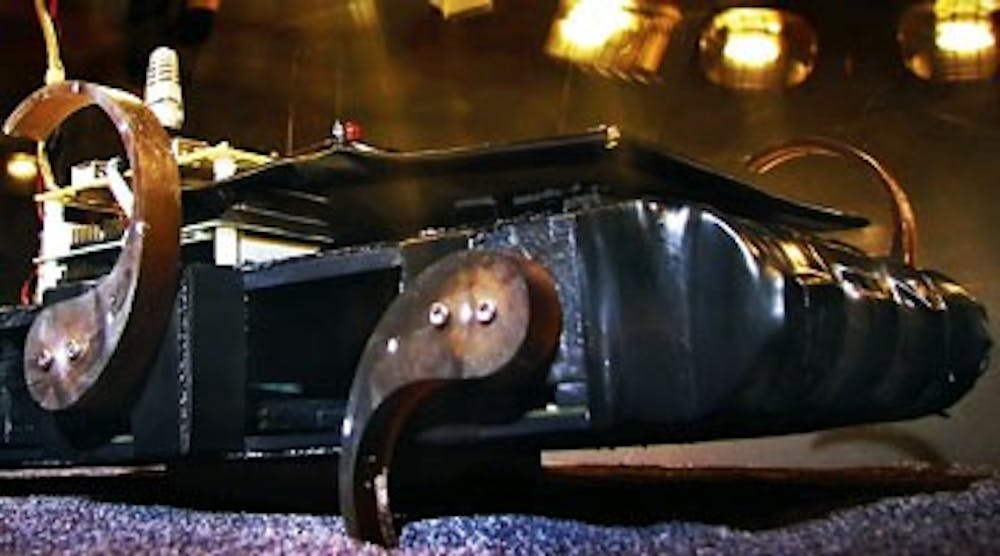
When a lizard runs across a sandy desert it may seem effortless, but crossing sand has proved to be nearly impossible for robots until the advent of SandBot.
Researchers at Penn and the Georgia Institute of Technology have collaborated to study how animals can accomplish what wheeled and tracked robots have not been able to do.
Electrical and Systems Engineering professor Daniel Koditschek and postdoctoral research fellow Haldun Komsuoglu had previously developed a series of six-legged robots, originally as a project for DARPA, the Department of Defense's research and development office.
Koditschek and Komsuoglu worked with Georgia Tech professor Daniel Goldman, who studies the physics of how animals move in materials such as sand. The collaboration has allowed Goldman to more effectively model the movements of animals on sand.
"By combining [Goldman's] understanding of granular media with [Komsuoglu's] robotics expertise, we can do work which none of us could have done alone," said Koditschek.
According to Goldman, sand presents a unique challenge for robots.
"Sand can behave like a fluid and a solid in the course of a footstep," he said.
"Slowing the legs down counter-intuitively led to greater speed on sand," Komsuoglu wrote in an e-mail.
SandBot initially had difficulty walking on sand, but adjusting its gait so that it made contact with the ground more slowly allowed Sandbot to walk successfully.
"If you walk slowly, the chances of sand providing you with the proper yield is much higher," said Komsuoglu.
Now that SandBot can move effectively, Komsuoglu is continuing to work on leg and foot design, which he said are "the most important things for mobility," while Goldman is investigating mobility in materials with varying degrees of compactness.
Koditschek and Komsuoglu both emphasized the numerous real-world applications for SandBot.
"We think the perfect sponsor for SandBot would be NASA," said Koditschek. "Many extraterrestrial settings have dusty, sandy spots that could use ... a legged robot, [which] could survive the steep, broken terrain in craters."
Komsuoglu also mentioned other applications with difficult terrain, such as search-and-rescue operations and amphibious military applications.
"No current system can swim onto the beach and move to a specific location on the beach," he said. A legged robot such as SandBot could "explore without sending anyone into harm's way."
However, Komsuoglu said many of the applications are not yet apparent because they are of the "if you build it, they will come" variety.
Perhaps there will be a "robot that will serve Coca-Cola to people who are sunbathing," he said.
The Daily Pennsylvanian is an independent, student-run newspaper. Please consider making a donation to support the coverage that shapes the University. Your generosity ensures a future of strong journalism at Penn.
DonatePlease note All comments are eligible for publication in The Daily Pennsylvanian.







